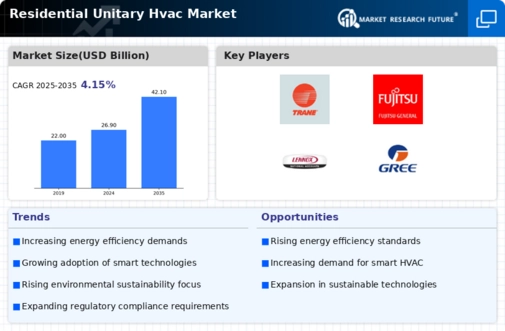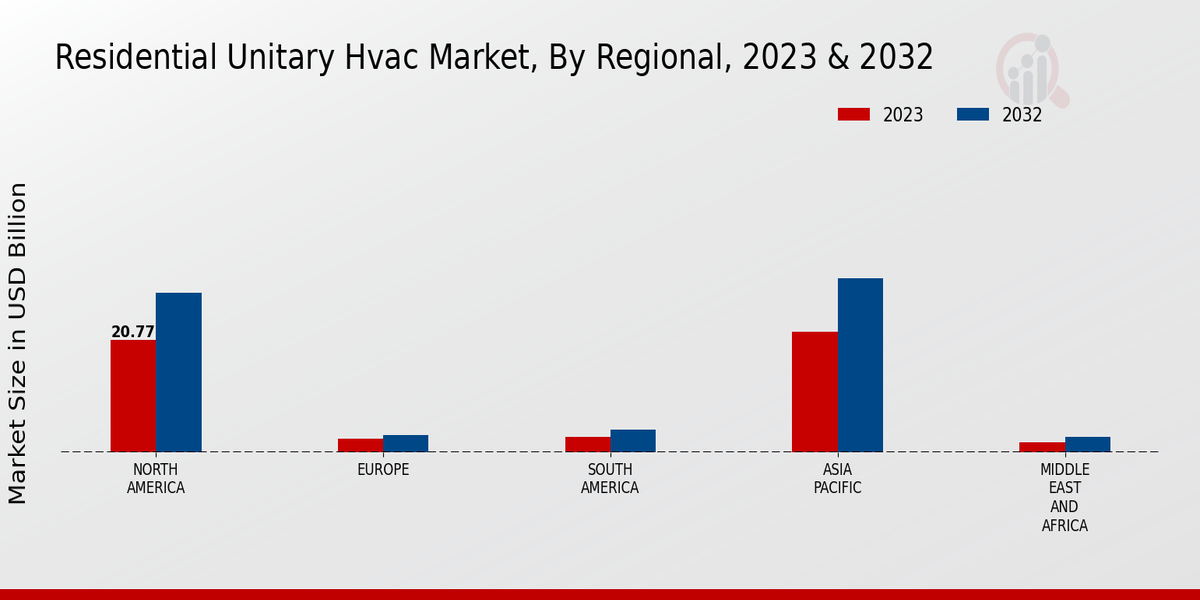Market Growth Projections
The Global Residential Unitary Hvac Market Industry is poised for substantial growth, with projections indicating a market size of 26.9 USD Billion in 2024 and an anticipated increase to 42.1 USD Billion by 2035. This growth trajectory suggests a robust demand for HVAC solutions driven by various factors, including energy efficiency, technological advancements, and regulatory support. The expected CAGR of 4.15% from 2025 to 2035 further underscores the market's potential, reflecting a dynamic landscape where innovation and consumer preferences shape the future of residential HVAC systems.
Technological Advancements
Technological innovations play a crucial role in shaping the Global Residential Unitary Hvac Market Industry. The integration of smart technologies, such as IoT-enabled thermostats and advanced control systems, enhances system performance and user experience. These advancements not only improve energy efficiency but also provide homeowners with greater control over their HVAC systems. As a result, the market is expected to grow significantly, with projections indicating an increase to 42.1 USD Billion by 2035. The continuous evolution of HVAC technologies suggests that manufacturers will increasingly focus on developing smarter, more efficient units to meet consumer demands.
Regulatory Support and Standards
The Global Residential Unitary Hvac Market Industry benefits from stringent regulations and standards aimed at improving air quality and energy efficiency. Governments worldwide are implementing policies that mandate higher efficiency ratings for HVAC systems, thereby driving manufacturers to innovate and comply with these regulations. This regulatory environment not only fosters competition but also encourages investment in research and development. As a result, the market is likely to witness robust growth, with a projected CAGR of 4.15% from 2025 to 2035, as companies strive to meet evolving standards and consumer expectations.
Rising Demand for Energy Efficiency
The Global Residential Unitary Hvac Market Industry experiences a notable increase in demand for energy-efficient systems. As consumers become more environmentally conscious, they seek HVAC solutions that minimize energy consumption while maintaining comfort. This trend is supported by government incentives aimed at promoting energy efficiency, which can lead to significant cost savings. The market is projected to reach 26.9 USD Billion in 2024, reflecting this growing preference. Furthermore, the anticipated CAGR of 4.15% from 2025 to 2035 indicates a sustained commitment to energy-efficient technologies, which are likely to dominate the market landscape.
Increased Home Renovation Activities
The Global Residential Unitary Hvac Market Industry is positively influenced by a surge in home renovation activities. Homeowners are increasingly investing in upgrading their HVAC systems to improve comfort and energy efficiency. This trend is particularly pronounced in regions experiencing economic growth, where disposable incomes are rising. Renovation projects often include the installation of modern, efficient HVAC units, contributing to market expansion. As the market is projected to reach 26.9 USD Billion in 2024, the ongoing renovation boom suggests a sustained demand for advanced HVAC solutions that enhance home environments.
Growing Awareness of Indoor Air Quality
The Global Residential Unitary Hvac Market Industry is significantly impacted by the increasing awareness of indoor air quality (IAQ). Homeowners are becoming more cognizant of the health implications associated with poor air quality, leading to a demand for HVAC systems that incorporate advanced filtration and ventilation technologies. This shift is driving manufacturers to develop units that not only provide temperature control but also ensure cleaner air. As the market evolves, the focus on IAQ is likely to contribute to its growth, with projections indicating a rise to 42.1 USD Billion by 2035.






